NF1 Gene Replacement Initiative
The leading edge in NF1 gene replacement
Gene replacement has the potential to both prevent and treat cutaneous neurofibromas as well as many other NF1 manifestations by restoring NF1 function in tumor-forming cells.
Neurofibromas are the hallmark of neurofibromatosis type 1 (NF1), a genetic condition caused by variants in the tumor suppressor gene NF1. NF1 encodes a Ras-GAP (Ras- GTPase activating protein) that inhibits Ras. Inactivating mutations in NF1 lead to increased Ras signaling that results in an increased incidence of nerve sheath tumors. A subset of these complex, histologically benign nerve sheath tumors may occur in the skin to form innumerable cutaneous neurofibromas (cNF), often causing disfigurement, pain, itch and reduced quality of life. Clinically, cNFs affect nearly 100% of people with NF1 by adulthood and there are no approved therapies to treat or prevent cNF. Before cNF form, the tumor-initiating cells likely exist in a state where they are susceptible to interventions that control their future fate.
Devising new ways to deliver therapeutic levels of the missing NF1 gene
Proof of principle for NF1 Gene Therapy
We have devised new ways to deliver therapeutic levels of the missing NF1 gene to the NF1-related tumors by injection of adeno-associated virus (AAV) vectors. Based on promising preliminary results, we are expanding our work to initiate pre-clinical studies on gene replacement therapy for cNFs that will culminate in a human clinical trial.
In this six-year initiative, we will deliver proof-of-principle for NF1 gene therapy to treat a specific tumor subtype by demonstrating that genetic or vector-based NF1 gene restoration in tumorigenic cells will rescue or prevent neurofibroma formation. Furthermore, we will apply our highly successful approaches to optimize AAV viral vectors and create a novel NF1 gene payload that can allow nearly complete restoration of NF1.
In parallel, we are exploring several other neurotropic vectors with larger loading capacity, such as Herpes Simplex-1 (HSV-1) and testing their feasibility as a gene therapy vector for NF1.
Subsequently, we will carry out the animal work to advance NF1 gene therapy to the point that it can be translated to people living with NF1 and cNF. To achieve this, our transformative approach encompasses five bold strategic initiatives to move us toward our goal to improve lives of people with NF1:
- NF1 gene replacement therapy proof of concept experiments to determine if NF1 restoration in tumorigenic cells will rescue neurofibroma formation using iPSCs and animal experiments
- Optimized Vector Development for efficient gene delivery to tumor-initiating cells using AAV, and assessment of bio-distribution and safety in non-human primates (NHP)
- Explore HSV-1 vector system for local delivery of full length NF1 gene and potentially other vectors
- NF1 Payload Development & Biomarker Discovery
- Animal Validation – Characterizing the efficacy of these technologies in mouse and other suitable models of NF1
“NTAP is bringing together leading research in molecular biology, developmental biology, and the biomechanics needed for gene therapy - all to work on a highly targeted question. This is an opportunity to do something incredibly complex and that a lot of people have struggled to achieve. We are looking to deliver extremely difficult engineering feats, and also show evidence of biologic mechanisms. It’s not enough to have one or the other, we are working to show both, and to do it in record time.”
